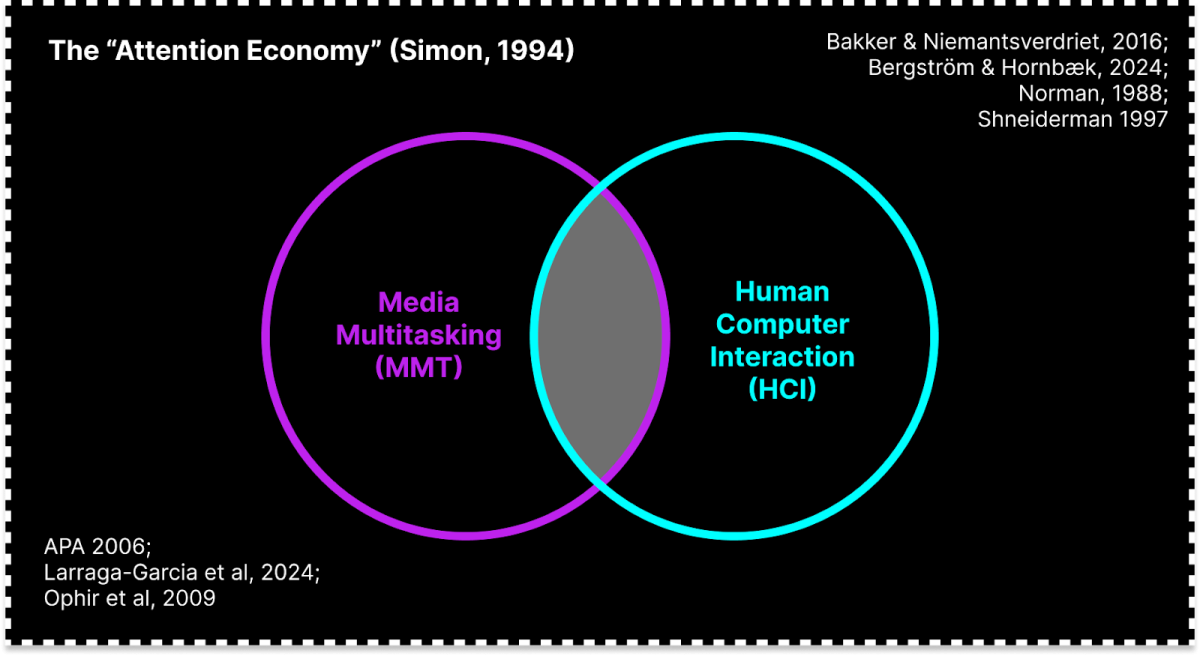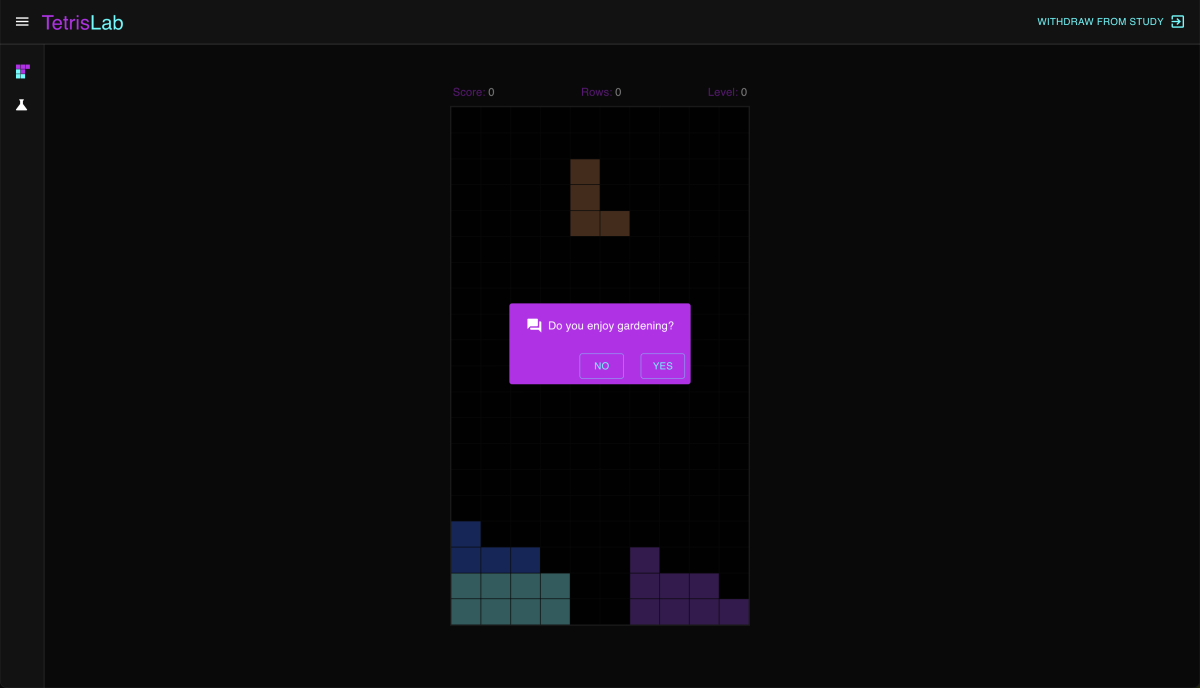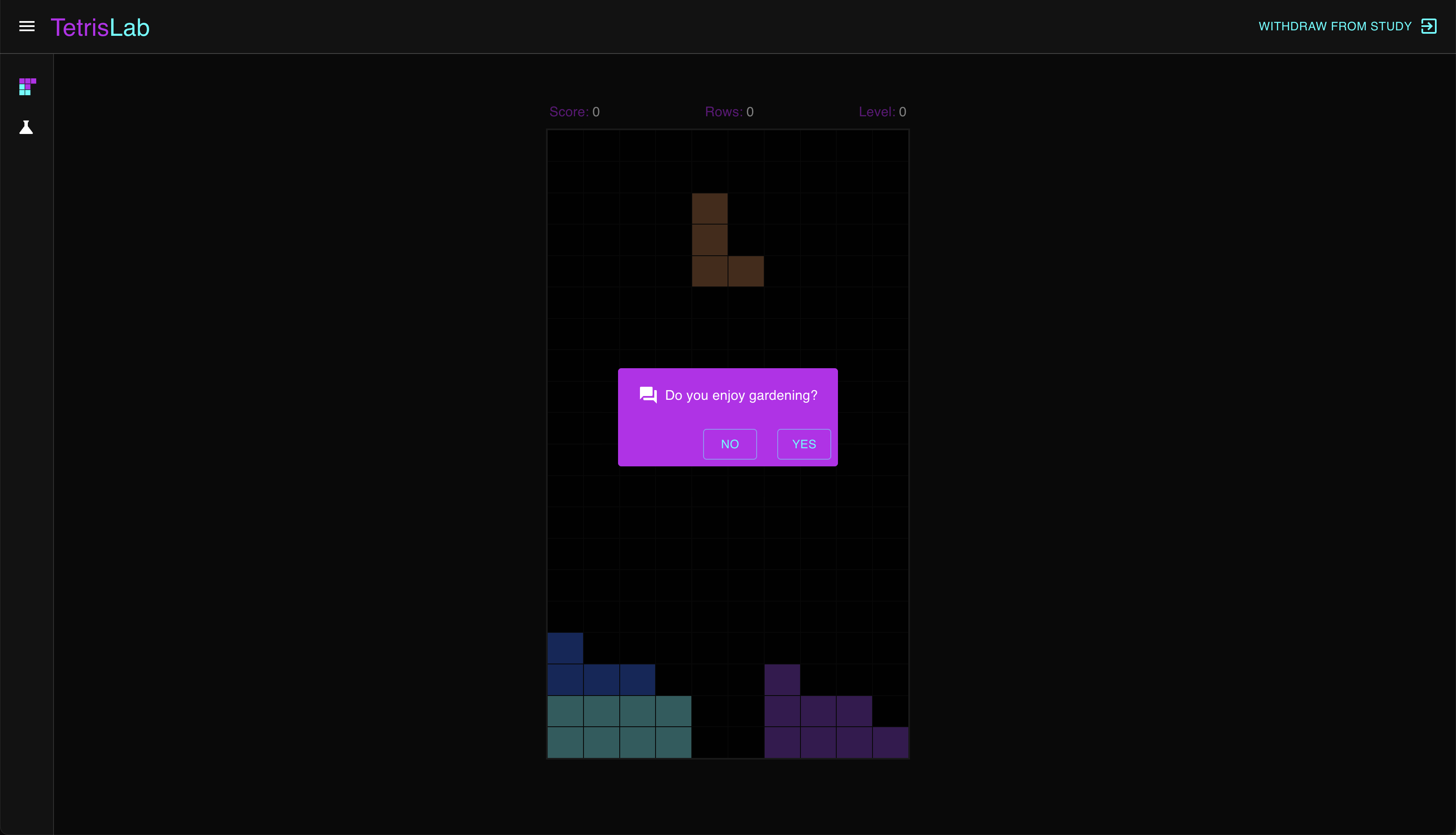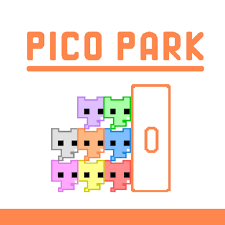
Des McDonnell
In today's connected world, we are presented with a perpetual flow of information while our cognitive capacity and the time available to us has remained the same. Attention, not information, is the limiting factor. Media multitasking has become ubiquitous as individuals engage with multiple digital media forms simultaneously, driven by constant alerts and notifications.
To cultivate flow and to optimise performance, users and UI designers should employ strategies such as media mindfulness and calm-technology to minimise intrusive interruptions and aim to preserve attention and digital wellbeing.
Keywords: Media Multitasking, Human Computer Interaction, UI Notifications, Flow, Digital Wellbeing, Media Mindfulness






This study applies theories of media multitasking and human-computer interaction to examine how distracting passive UI notifications (non-blocking ‘toast’ elements) and interrupting active UI notifications (blocking ‘dialogs’ components) impact flow and performance during a standardised Tetris-based multitasking experiment.
Ninety-nine participants were classified as heavy or light multitaskers using the revised 18-item Media Multitasking Questionnaire, and randomly assigned to one of three conditions: control (no notifications), passive notifications every 10s for 5s, or active notifications requiring acknowledgment at 10s intervals. The primary task was a standardised Tetris game (performance = score), and flow was assessed post-task using the 36-item Flow State Scale-2.
Results show that passive notifications did not significantly impair flow or performance, whereas active notifications produced a larger performance drop, especially among heavy multitaskers while longer interruption durations correlated with greater performance decrements. Flow ratings were overall lower for heavy multitaskers.









